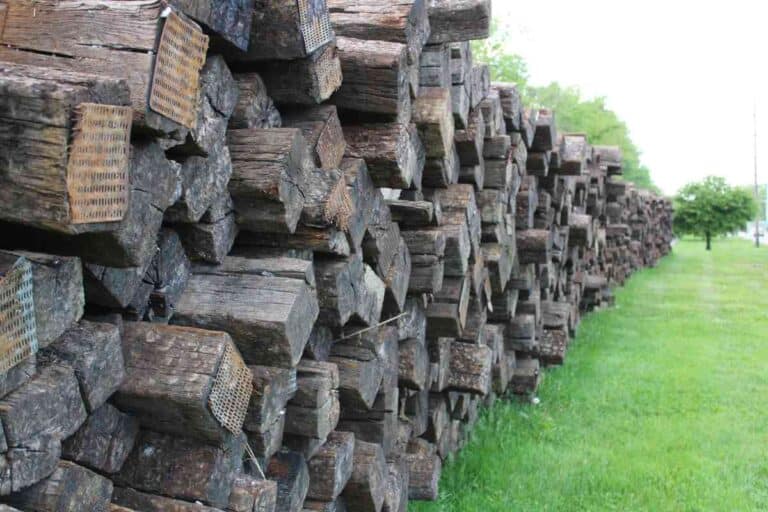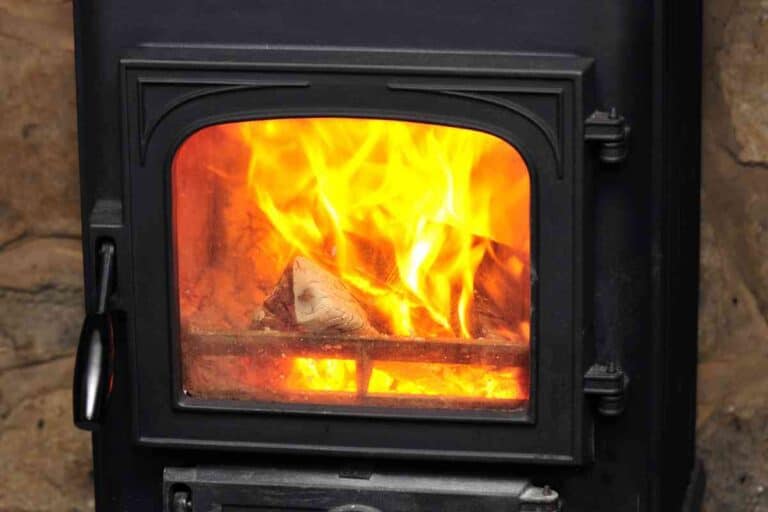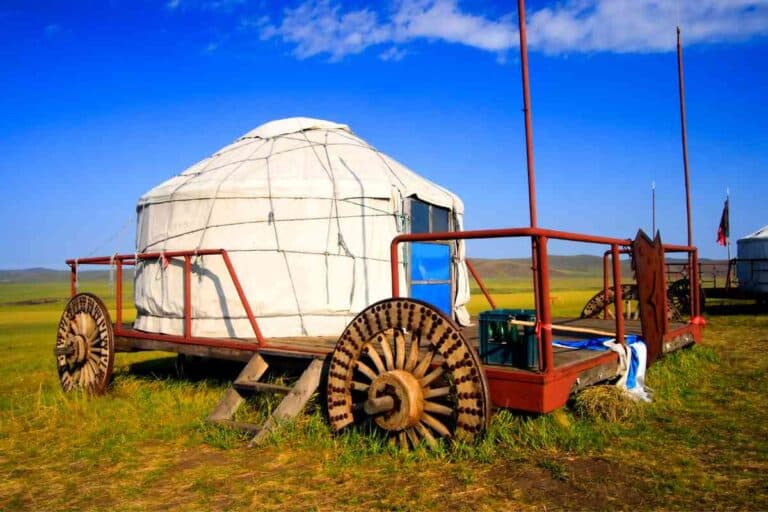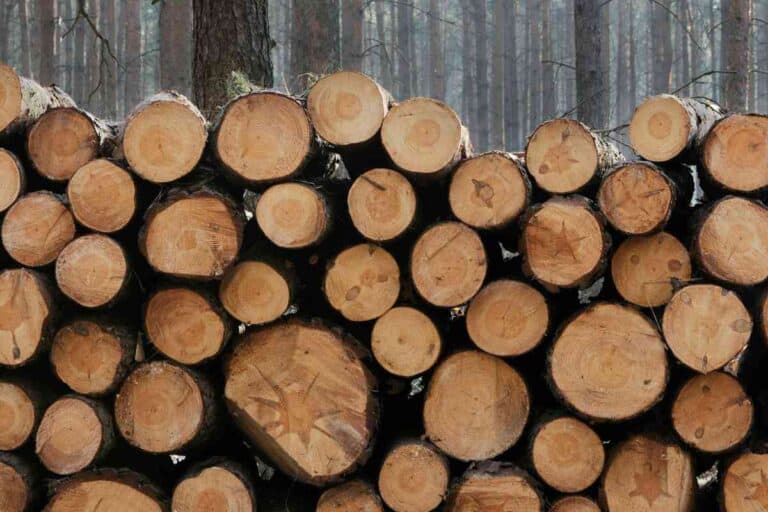How Cold Is Too Cold To Leave A Propane Tanke Outside In Winter?
Propane is great for heating your home during winter. However, it matters how low the outdoor temperatures get, especially if your tank is stored outside.
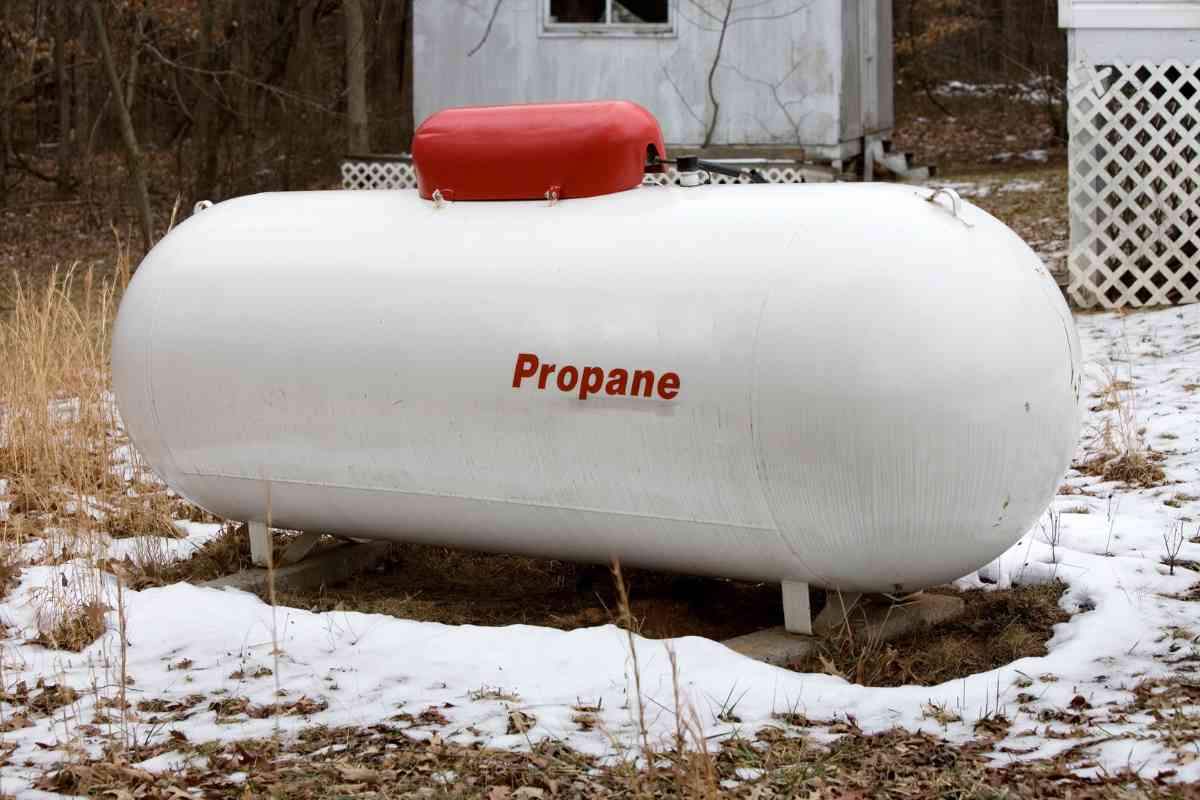
Can I leave my propane tank outside in winter?
You can and should leave your propane tanks outside in winter because it’s a fire hazard when indoors. However, even as you store the tank outdoors, be sure that the temperatures never get below -43.60F, the temperature at which propane turns into liquid and stops working effectively.
We talked to a few home users who utilize propane for heating their homes during winter to find out their experience with this.
We also visited propane experts to understand this gas’s properties and how they react to temperature changes. This research informed our conclusions about the appropriate storage techniques for propane tanks. Read on to learn more.
Can Too Much Cold Affect Your Propane Gas Cylinder?
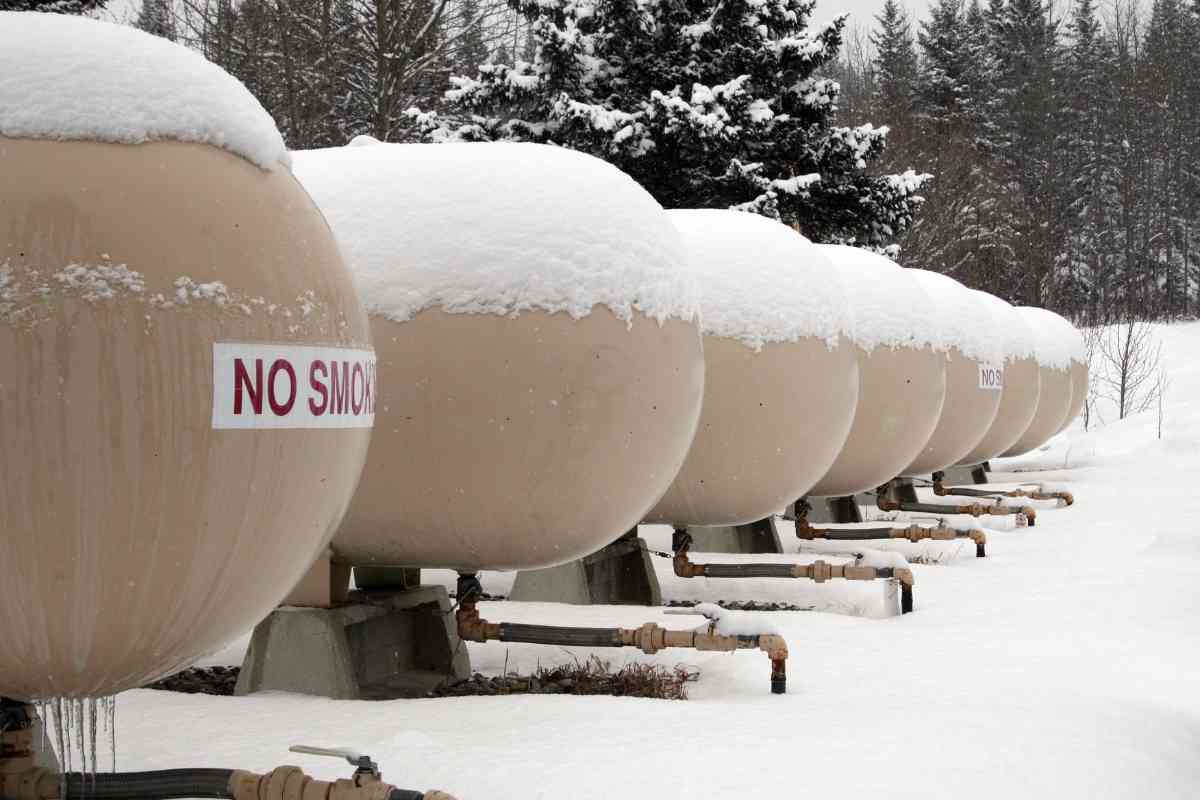
Most homeowners who use propane to warm their homes in winter already know how effective this gas is.
However, there is a specific temperature within which the propane gas works optimally. Any temperature decrease leads to a significantly lower pressure, affecting productivity.
The good news is that the temperature of most places in use is never that low to trigger the malfunctioning of the propane gas.
Propane gas turns liquid at temperatures of -43.60F and below. At this stage, the gas is too low to work effectively and will not power your propane heating equipment effectively.
While it is safe to assume that the temperatures will not get to these levels, you are advised to be cautious when handling your propane tank during such extreme temperatures.
Take precautions and know how best to store the tank during cold weather/ season.
Avoiding Pressure Issues with Low Pressure
The pressure difference is probably the major concern with your propane tank during cold winters.
There are a few practical ways to take care of this concern, including:
- Ensuring the tank is a quarter less full. This caters to the positive pressure difference that happens during cold weather.
- Ensuring the tank’s regulator does not have accumulated snow on it.
Turning the thermostat down and decreasing the temperature in your house. This way, you reduce the number of times your heating appliance has to be operational, allowing pressure build-up.
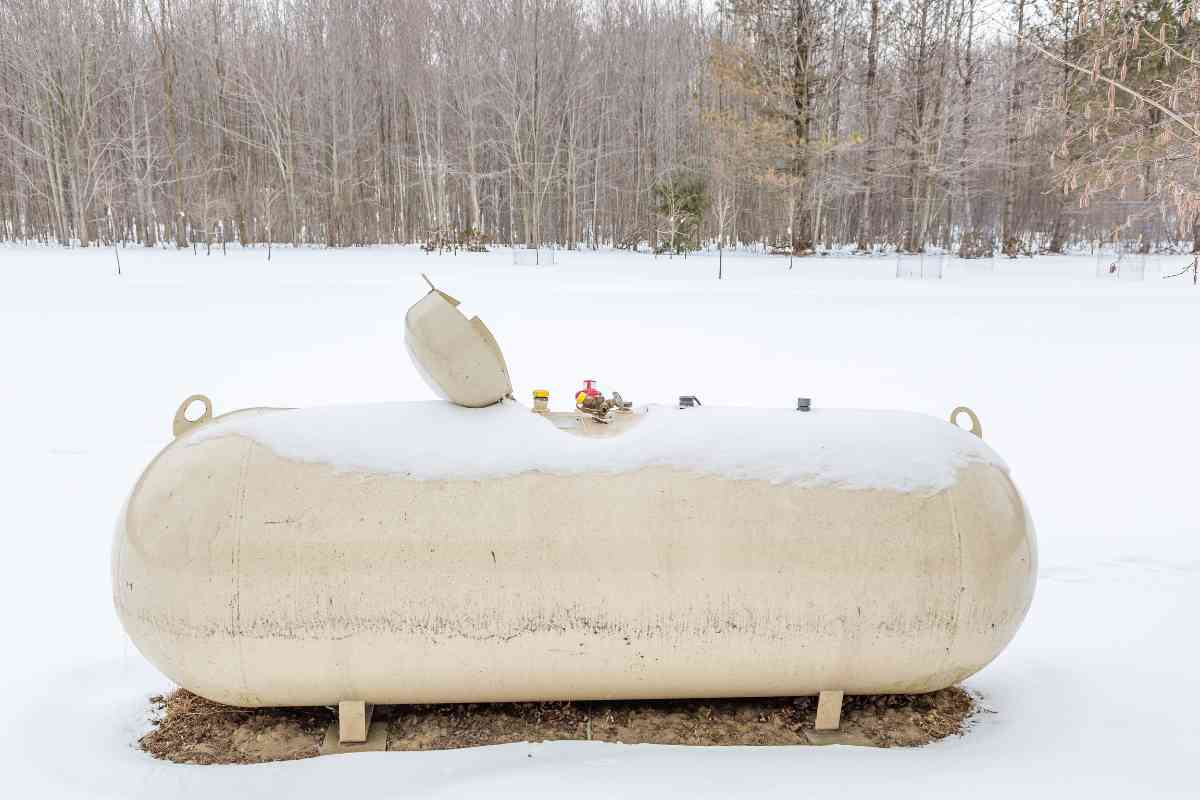
What Else Can You Do with Your Propane Tank in Winter?
Besides taking care of the pressure differences resulting from the cold weather, you can also do a few more things to increase the efficiency of your propane tank.
- As you clear any snow on the tank’s regulator, make sure also to wipe down the pipes, vents, and valves. This ensures that no damage could potentially cause the tank to leak.
- Remove all the snow from the flues, vents, and chimneys of the appliances used. This enhances proper venting of the gas hence improving efficiency.
- Always place a long enough flag to stand out even when there is heavy snowfall. It makes it easier to identify the tank’s location if it is submerged in the snow. This way, you can tread carefully when digging through the snow and clearing the tank area.
- Always turn off the gas supply if you suspect a gas leak and the appliances fail to light when you switch them on.
How Should You Protect Your Propane Tank in Winter?
No one wants their propane tank to fail in the middle of harsh winter. It gets so cold that it may be impossible to survive without heating.
So, you should implement some preventive measures to ensure your propane tank does not fail.
With propane gas making things easier, it is only reasonable that you ensure to respond abruptly to emergency repairs and focus on providing the propane tank at its best.
Always Refill your Propane Tank
Prepare for winter in advance by ensuring your propane tank is filled when temperatures drop. It is important to check the gauge and call your supplier to fill it fully if it is beyond the halfway mark. An emergency refill in the middle of winter is likely to cost you more.
Prioritize Maintenance
Have a maintenance technician visit your home as soon as winter signs show.
It is even more important if you only use propane for heat since the tank may have stayed unused for several months. A technician will inspect all parts of the tank and repair it if there is a need.
Find a Way to Keep the Tank Visible in Winter
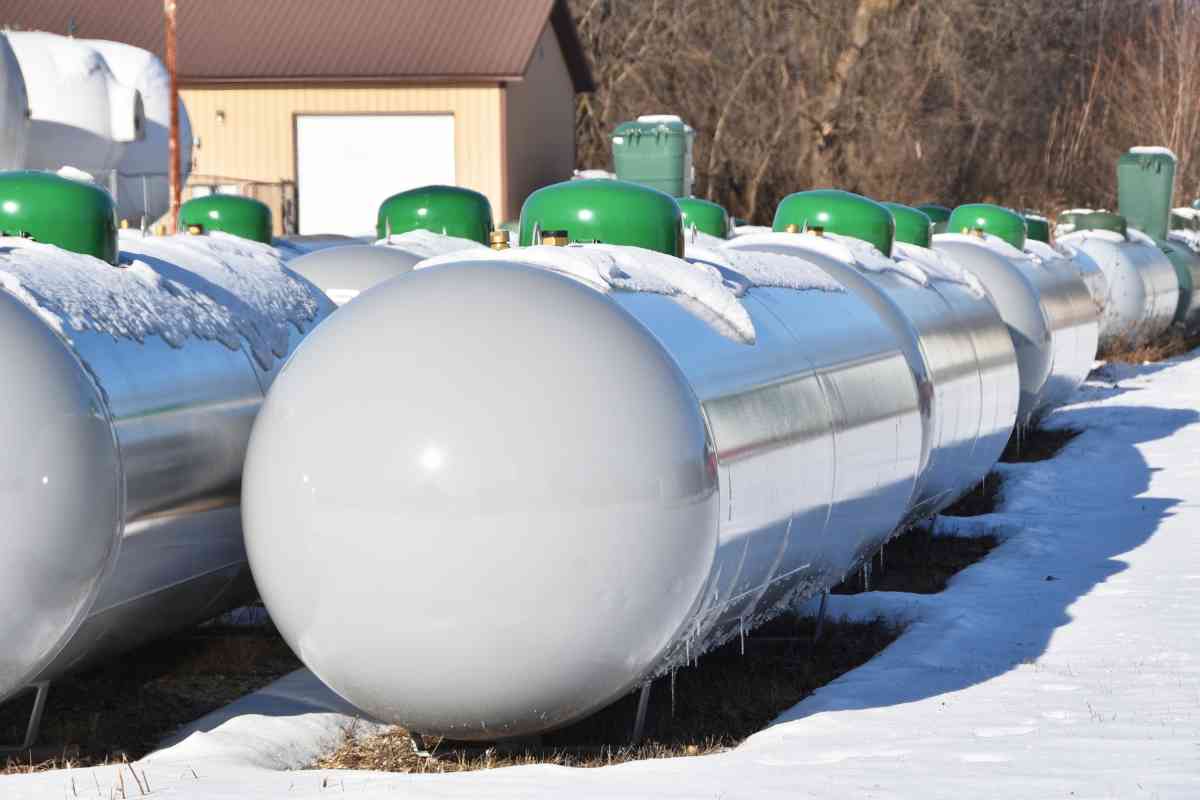
It is not easy to predict how much snow will fall. However, use a flag or other means to identify the tank’s location if it is covered in snow.
You need to know the exact location of your tank just in case you need to refill it in the middle of winter.
Make it Easy to Get to the Tank
You want the tank to be easy to reach just in case the technician has to get to it. Clear all shrubs and bushes on the path such that all you have to worry about in winter is clearing the snow. The technician will likely help you better if they can get to the tank.
Keep the Tank Outside
Do not be tempted to keep the tank indoors, no matter how cold it gets outside. The propane tank is built to withstand extreme cold temperatures as long as they exceed -42 degrees Celsius.
Keeping the tank in your garage, indoors, or under a shade poses the risk of carbon monoxide poisoning and fire hazards when the temperatures inside the tank rise.
Consider Upgrading to a Programmable Thermostat
The secret is to control the temperatures in your home as one of the ways to ensure the propane temperature doesn’t change.
Controlling the temperatures when you are away from home will also help you save money. It also provides less wear and tear on the propane storage tank.
Key Takeaways
- You should store propane gas tanks outdoors in winter.
- Propane gas liquefies at -43.60F. It does not freeze.
- It is safe to have your propane tank outside in winter.
- Protect your propane tank from failing through preventive measures.

